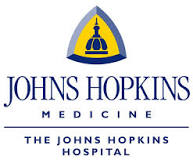Early Speech With One-Way Speaking Valve in Tracheostomy Patients
| Status: | Recruiting |
|---|---|
| Conditions: | Pulmonary |
| Therapuetic Areas: | Pulmonary / Respiratory Diseases |
| Healthy: | No |
| Age Range: | 18 - Any |
| Updated: | 12/15/2018 |
| Start Date: | February 5, 2016 |
| End Date: | November 28, 2020 |
| Contact: | Vinciya Pandian, PhD, MSN, ACNP |
| Email: | vpandia1@jhmi.edu |
| Phone: | 443-655-3482 |
Early Speech With One-Way Speaking Valve in Tracheostomy Patients - Pilot Study
Patients with tracheostomy who are on and off of mechanical ventilation initially lose the
ability to speak, and the use of one-way speaking valves (OWSV) is one method of restoring
speech in these patients. Patients with tracheostomy who experience loss of speech report
frustration and feelings of confinement from their communication impairment, therefore
investigators would like to restore speech in these patients as soon as it is safe to do so.
However, there is currently little known in the literature about the timing of the use of
OWSV in patients with tracheostomy. Therefore, the investigators propose a pre-test post-test
clinical trial pilot study to investigate the safety of early use of OWSV in patients
undergoing a percutaneous tracheostomy. Study aims are to identify patients who would benefit
from the early use of OWSV and to determine the effects of early use of OWSV on speech and
clinical outcomes. To achieve these aims, patients who undergo percutaneous tracheostomy will
be screened, and patients meeting screening criteria will be randomized into intervention and
control groups. The intervention group will receive early speech-language pathology (SLP)
evaluation and OWSV trial at 12-24 hours following tracheostomy procedure, and the control
group will receive standard SLP evaluation and OWSV trial at 48-60 hours following
tracheostomy procedure. Intervention and control groups will been compared on speech and
clinical outcomes measures from pre-test at 12-24 hours following tracheostomy and post-test
at 48-60 hours following tracheostomy and characteristics of patients who successfully
tolerate early OWSV use will be identified.
ability to speak, and the use of one-way speaking valves (OWSV) is one method of restoring
speech in these patients. Patients with tracheostomy who experience loss of speech report
frustration and feelings of confinement from their communication impairment, therefore
investigators would like to restore speech in these patients as soon as it is safe to do so.
However, there is currently little known in the literature about the timing of the use of
OWSV in patients with tracheostomy. Therefore, the investigators propose a pre-test post-test
clinical trial pilot study to investigate the safety of early use of OWSV in patients
undergoing a percutaneous tracheostomy. Study aims are to identify patients who would benefit
from the early use of OWSV and to determine the effects of early use of OWSV on speech and
clinical outcomes. To achieve these aims, patients who undergo percutaneous tracheostomy will
be screened, and patients meeting screening criteria will be randomized into intervention and
control groups. The intervention group will receive early speech-language pathology (SLP)
evaluation and OWSV trial at 12-24 hours following tracheostomy procedure, and the control
group will receive standard SLP evaluation and OWSV trial at 48-60 hours following
tracheostomy procedure. Intervention and control groups will been compared on speech and
clinical outcomes measures from pre-test at 12-24 hours following tracheostomy and post-test
at 48-60 hours following tracheostomy and characteristics of patients who successfully
tolerate early OWSV use will be identified.
Inclusion Criteria:
- Patient who received a percutaneous tracheostomy
- Glasgow Coma Scale score ≥9
- Confusion Assessment Method -ICU (CAM-ICU): negative
- Richmond Agitation Sedation Scale (RASS): -1 to +1
- Able to understand English
Exclusion Criteria:
- Open tracheostomy
- Laryngectomy
- Presently using OWSV or capped trach
- Foam-filled cuffed tracheostomy tube
- Presence of known severe airway obstruction
- Presence of post-operative bleeding requiring transfusion or packing
- Presence of air-leak around the cuff resulting in respiratory decompensation
We found this trial at
1
site
Johns Hopkins Hospital Patients are the focus of everything we do at The Johns Hopkins...
Click here to add this to my saved trials
